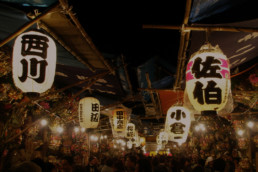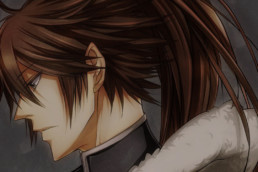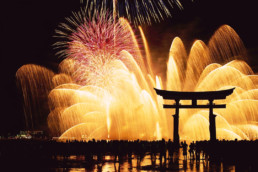Japan Travel: Nikkō
Nikkō - The timeless town

Not far from Tokyo, there is a town that could be described as magical. This is Nikkō, literally "The town of sunlight”. Located in the mountainous region of Tochigi Prefecture, it is one of the most famous tourist destinations in Japan. Rich in historical monuments, it has been listed as an UNESCO World Heritage Site. Its most famous monuments are the Nikkō Tōshō-gū shrine dedicated to the shogun Tokugawa Ieyasu, and the Futarasan shrine dating back to 767.
The city is also surrounded by nature with mountains, hot springs and the Nikkō National Park where several beautiful waterfalls can be found.
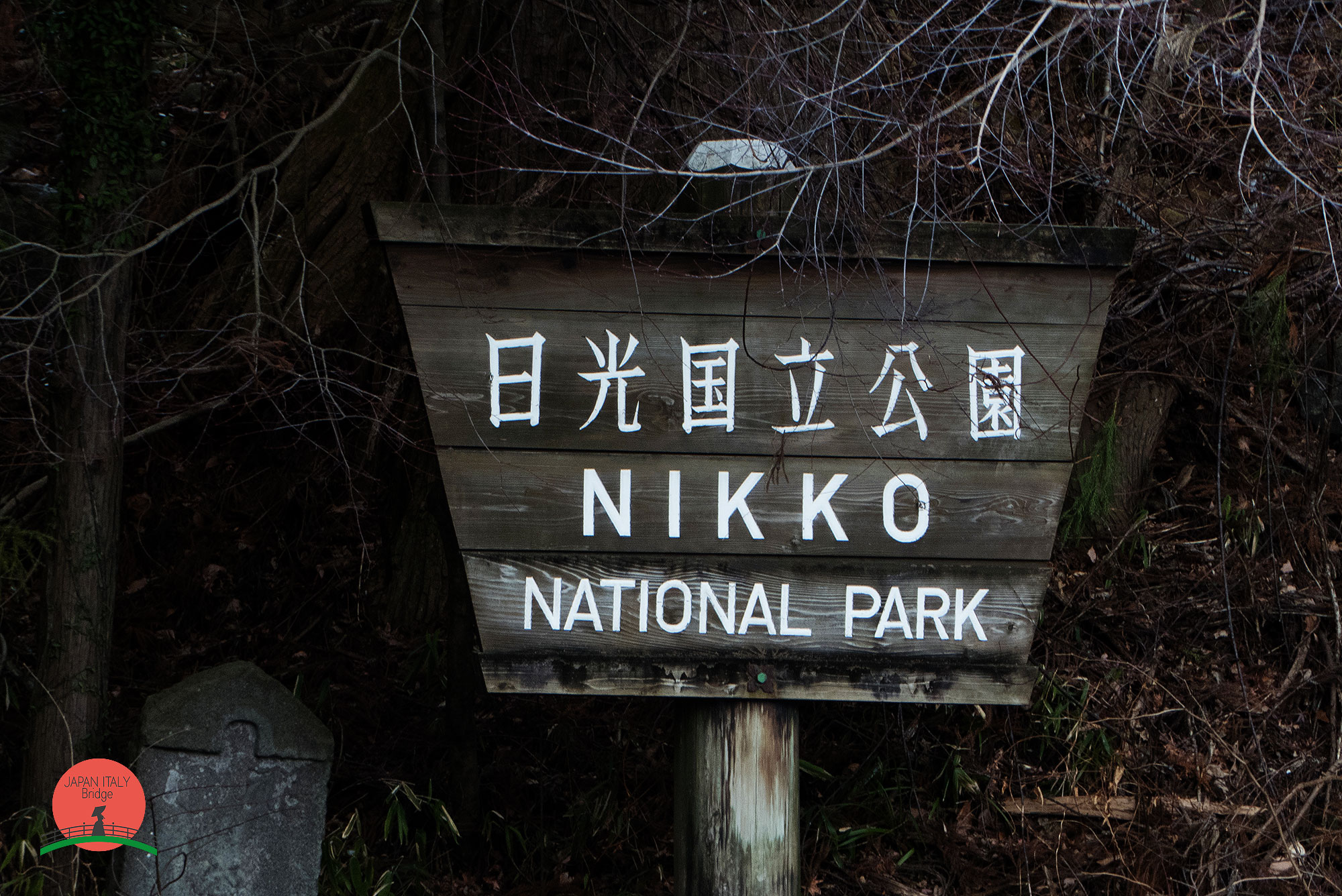
Between sacred and modern
On March 20, 2006, the old town of Nikkō merged with the city of Imaichi and the municipalities of Ashio, Fujihara and Kuriyama, resulting in the new city of Nikkō . Sacred and profane, a division that is even more evident thanks to the great "sacred bridge" Shinkyo, completely lacquered in red and that was originally reserved to the emperor and the shogun. Today, this same bridge is crossed by hundreds of visitors each year arriving at the Rinno-ji, the great temple best known for the "Three Buddha Hall".
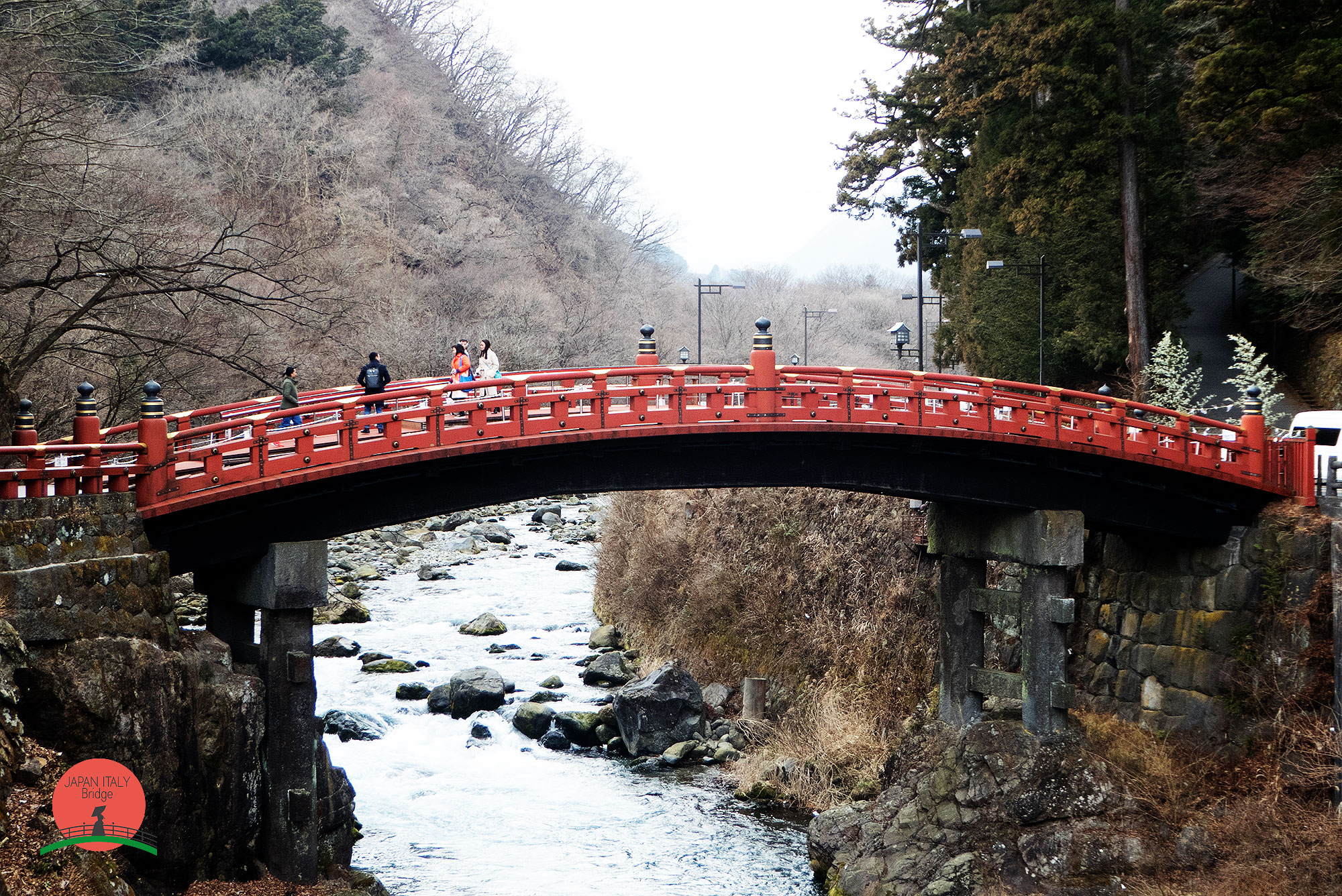
Monuments
Behind this temple there is the Tōshō-gu shrine where the great Tokugawa family established their Shinto shrine making it the most richly decorated temple in the country. More than 15000 artisans of the country participated in its construction and with its gildings, its bright colors, its sinuous lines, this place of worship is considered as one of the most beautiful examples of Momoyama architecture (1573-1603). Even more famous is the pediment of the sacred stables, genuinely minimalist and especially known by all the Japanese for the three little monkeys carved in the wood: Mizaru ("the blind"), Kikazaru ("the deaf") and Iwazaru ("the mute"). In fact, they symbolize the precepts of the Tendai Buddhist sect, inspired by Confucius: do not look at evil, do not pronounce it, do not listen to it.

If you have a whole day to explore the city, you can not miss the opportunity to visit the statue of the sleeping cat that marks the entrance to the tomb of Tokugawa Ieyasu. Subsequently, along the Daiyagawa river, you can find the Kanmanga Fuchi path, a sumptuous walk through the woods and the strange volcanic formations of Mount Nantai. At the end of this walk, dozens of statues of Jizō, protector of the children, await you where time seems to have stopped.

At a distance of 30 km from there, you can then find the magical Chūzenji lake, where you can take a boat trip to the spectacular Kegon no Taki waterfall and the Yumoto Onsen hot springs.
A city between history and modernity, between mountains and enchanted lakes, a small pearl of history not far from the metropolis of Tokyo. Here you can still perceive the classic feeling of Japanese tradition in its fullness. A destination not to be missed for all those who love this nation and its culture.
How to get here
The train is the quickest and most convenient way to reach Nikko from central Tokyo.
Tobu Line - Asakusa
From Asakusa Station, easily reachable by metro from all the main districts of Tokyo, you can take the Tobu line which offers rides to Nikko every hour. The cost per round trip is about 2800 ¥, the ride takes about 2 hours and is by far the cheapest option. The JR Pass is not valid on this route.
info: Tobu Line website
Limited express - Shinjuku
The JR limited express connects Shinjuku station directly with Nikko, the cost of a round trip ticket is 8000 yen. Unfortunately, the JR pass does not completely cover the route so, it will be necessary to pay an additional charge. To book your seat just consult the JR East website.
Info: JR East website
JR Shinkansen - Tokyo
This is the fastest and most convenient way to get to Nikko, especially if you have a JR Pass. It is possible to take the JR Tohoku Shinkansen from Tokyo station, but you will have to change at Utsunomiya and continue on the JR Nikko Line. The cost of the round trip is 10000 ¥, not recommended for those who do not have the JR Pass..
Info: Hyperdia website
Japan Travel: Shinjuku
Shinjuku
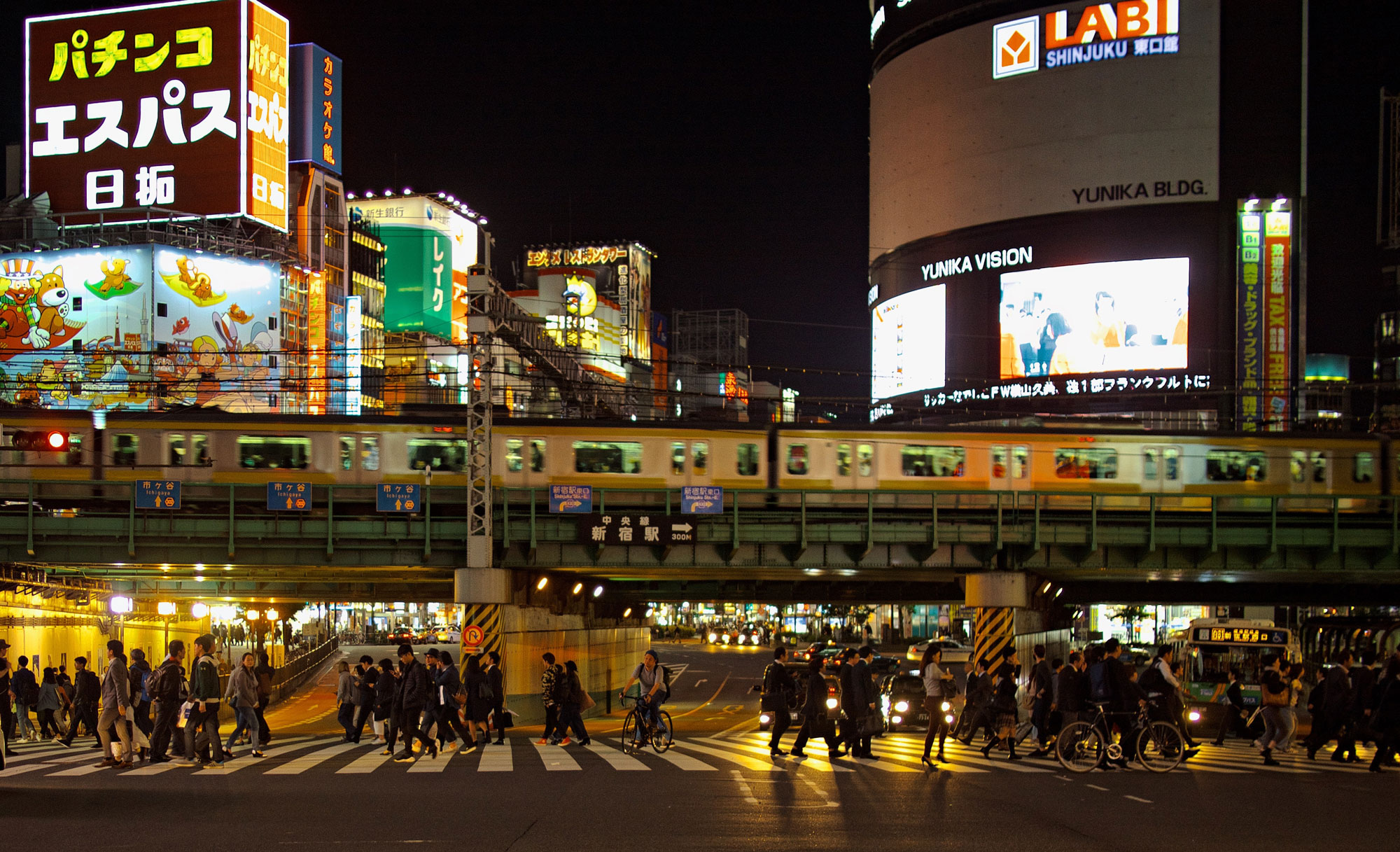
Photo credits: Sergio Rola
Shinjuku (新宿), important commercial and administrative center with the world's busiest railway node, is part of the 23 special wards of Tokyo.
Not just trains, Shinjuku is also one of the major stops for long-distance buses. The Busta Shinjuku, a large terminal, is located right at the top of the railway station.
Taking the station as a reference point, west of it, you find yourself in the Skyscraper District. Here are located the highest buildings in Tokyo including luxury hotels and the twin towers of the Tokyo Metropolitan Government building. Designed by the famous architect Kenzō Tange, it’s here that the political and public administration of the city is handled. Its towers are 243 meters high and the observation bridges, located on the 45th floor, are open to the public for free.
Right from those observation bridges, one can see the Mode Gakuen Cocoon Tower, a skyscraper located in the financial district of Nishi-Shinjuku. 203 meters high, consisting of 50 floors with three schools inside: a fashion one (Tokyo Mode Gakuen), design one (HAL Tokyo and Shuto Ikou) and a medicine one. The architecture, also designed by Tange, gives to the skyscraper a cocoon shape created by the twisted white aluminum tubes (curtain wall) that rise diagonally.

Photo credits: Google immagini
Shinjuku is not only modernity but also houses one of the largest and most enjoyable parks in Japan: the Shinjuku Gyoen, where cherry blossoms is renowned for being among the best in the country. The park was opened to the public in 1949 after being the Garden of the Imperial family since 1903.
Shinjuku’s districts

Photo credits: Gor Badoyan
Among the most famous and discussed neighbourhoods, here is Kabukichou, located northeast of the station. It is the largest red-light district in Japan, and perhaps it is for this reason that the entrance is announced by a great red light sign. The history of this district is really curious: its name derives from a kabuki theater that was never built. Since 1872, fifth year of the Meiji Era, when laws governing relations with geishas and prostitutes were revoked in Japan, Kabukichou became the main red-lights district of Tokyo. Subsequently, laws against prostitution became stricter and after the Second World War the district was subjected to some attempts to change its image. It was then made an attempt to bring here Ginza's Kabuki-za theater, destroyed by a fire, but eventually the theater was rebuilt in Ginza, while in Kabukicho just kept the name.
Later on, another theater was built in Kabukichou, the Koma Theater, located in a building that contains some bars and nightclubs.
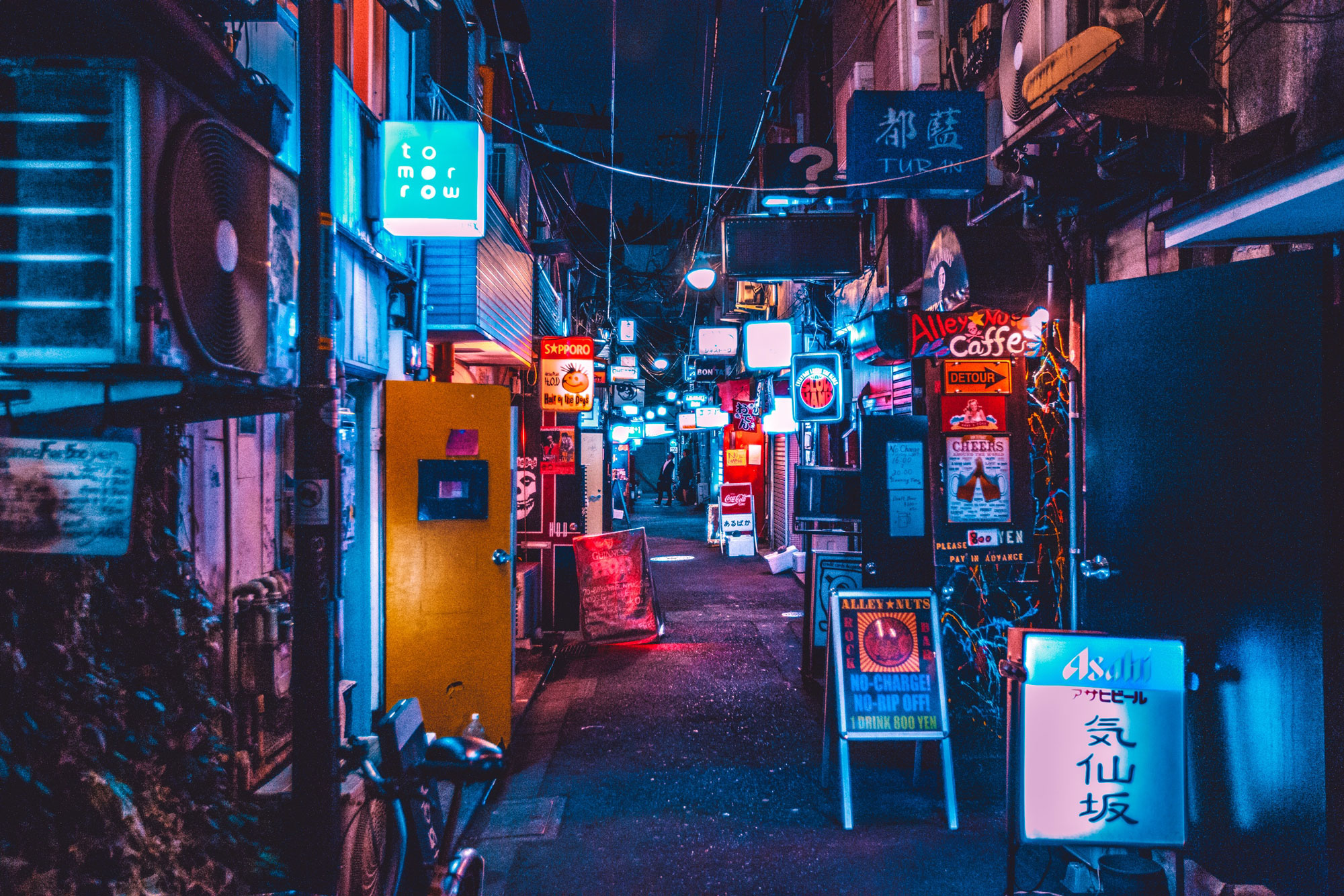
Photo credits: Benjamin Hung
Kabukichou never sleeps and this area boasts numerous restaurants, bars, nightclubs, "love hotels" and a variety of red-light structures for all sexes and orientations. Walking down Kabukichou’s streets can be risky in terms of expenses. Prices are exorbitant as everything is handled exclusively by Yakuza, one of the reasons why Kabukicho is also one of the safest neighborhoods in Tokyo because there is an attentive control over the various activities. Right here, in a maze of narrow alleys we come across the Golden Gai (the Golden Street) where a series of very small and peculiar bars peek out. The seats inside are limited, 2 to 5, and may be often located in basements as well! Moving around among them, you can hear loud laughs and if you spy inside you may spot eccentric people, writers, directors and some curious tourists. These small places can also have a theme, but in each of them what you can always drink is the yamazaki, a particular Japanese whiskey.
Out of the Golden Gai, we find Ichigaya, headquarter of the Ministry of Defense. Okubo, filled with Korean stores selling traditional food and many classical gadgets of the Korean pop culture. There are also Korean-themed bars, red-lights clubs and restaurants. Shinjuku ni-chome, is Tokyo's gay district, and finally Takadanobaba. The latter, is an area mainly frequented by students from the nearby Waseda University and Gakushuin University, there are preparatory schools and entertainments, and many bars and Izakayas. The Izakaya, consisting of the words "i" (sit down), saka (sake) and ya (shop), is a typical Japanese restaurant that sells drinks accompanied by food, a kind of pub.
The symbol of Takadanobaba is the "Big Box", a large box-shaped building next to the station.

Photo credits: Google immagini
Sacred and profane

Photo credits: Node Reaver's Blog
It sounds incredible, and yet it is right among Shinjuku’s skyscrapers that a space of peace and prayer opens up: the Shinto Temple Hanazono. It was founded in 1600 and is often visited by businessmen as the temple is devoted to the gods of economic success. It is almost a fundamental stop for tourists who, having walked around the chaotic Shinjuku, want to find some rest and, every Sunday, look around the antiques market. There are many festivals and religious events that take place at the Hanazono, the main one is held the last weekend of May, the Jinja Reitaisai. On this occasion there is a modest procession in which the small mikoshi is carried by the worshippers. Outside the temple 100 stands of every kind crowd the surrounding space offering a perfect interweave between sacred and profane.

Photo credits: Google immagini
Japan History: Maeda Keiji
Maeda Keiji

Photo credit: wikipedia.org
Maeda Toshimasu, (1543-1612) also known as Maeda Keiji or Keijiro, was a Japanese samurai who lived in the Sengoku Period (1467-1568).
Born in Nagoya, he was the son of Takigawa Kazumasu, who was later adopted by his uncle Maeda Toshihisa, brother of Maeda Toshiie. He served under Oda Nobunaga with his uncle and was initially the heir of the clan. However, Nobunaga replaced Toshihisa with Toshiie as head of the Maeda family, and Toshimasa lost this position. At that point, the disagreements between him and his uncle Toshiie began, and it is said that they often quarrelled.
In 1581, he made a reputation for himself under his uncle’s command in a conflict in the Province of Noto. During the Battle of Komaki-Nagakute, three years later, Toshimasu saved Sassa Narimasa when he was attacked at the Castle of Suemori.
In Kyoto, he met Naoe Kanetsugu the karō (samurai and senior advisors at a daimyō service) of Uesugi Kagekatsu. The two of them became friends and Toshimasu joined the Uesugi clan in the invasion of Aizu. The invasion failed, and Keiji led the rearguard during the retreat.
In the battle, however, he was able to give a splendid show of force riding on his inseparable horse Matsukaze, 'the wind among the pines', while brandishing his spear. Due to Keiji’s actions, the Uesugi's forces were able to retreat intact, while the samurai returned to the capital devoting himself to art and literature.
He was later barred from Toyotomi Hideyoshi’s campaign in Kyushu for his wild behaviour. But when Tokugawa Ieyasu challenged the Uesugi clan in 1600, Keiji once again fought with them.
In the battle against the Mogami, legend says that he succeeded in breaking the enemy lines with only eight riders, shattering their formation.
After the Uesugi clan retired in the Yonezawa Domain, Toshimasu remained with them.
According to the legend, after Keiji’s death, his horse Matsukage, that shared with his master the same indomitable personality, ran away never to be found again. It was a magnificent horse that no one else but Keiji had been able to tame, and so powerful to carry his master’s large frame.
It is still possible to see Keiji’s armour at the Miyasaka Museum.

Photo credit: wikipedia.org
Keiji - Hana no Keiji

Photo credit: vignette3.wikia.nocookie.net
The character of Keiji Maeda was so characteristic and so eccentric that he was chosen as the protagonist of a series of manga, Keiji ( 花の慶次 - Hana no Keiji). The story is written by Keichiro Ryu and drawn by Tetsuo Hara, better known for his other work, Fist of the North Star.

Photo credit: Google images
The manga tells the adventures of the greatest kabukimono that ever existed in Japan. A kabukimono is an eccentric person who loves to stand out from others for his behaviour and his appearance, and who has the ultimate goal of imposing his will on others.
Keiji is the son of Takigawa Masuuji and one of his concubines. At that time, the Maeda family was a vassal of the Takigawa clan, and during a reception, Maeda Toshihisa met the girl and asked Takigawa for permission to marry her. On the wedding night, the bride confesses she is already pregnant with her former lord. But instead of killing her (as it was customary in an era where honour and noble blood were fundamental) Toshihisa adopted the child.
Thus, at his birth Keiji (whose full name is Keijiro Toshimasu Maeda) officially became Toshihisa's son and so nephew of Maeda Toshiie, one of the richest Japanese feudal lords of the Sengoku era. During this time, great battles take place in order to decide who will rule Japan after Oda Nobunaga. Keiji, raised on battlefields and gifted with great strength, participates in many of these events.

Photo credit: ayakashi-ghost-guild.wikia.com
His character has a strong sense of honour and personality that follows the basic principle of being a kabukimono to the fullest. Therefore, Keiji seeks to always impose his own will, aware that this means being free to act as he pleases, but also to be killed "like a dog".
Despite the eternal struggle with his uncle, who tried to kill him repeatedly, Keiji remained in the clan and so under his uncle's authority until Toshihisa's death. It was after that when he began to behave in such a way that got him expelled from the clan. This will save the honour of the clan itself since a samurai who voluntarily abandons his master dishonours him.
The Characters
Various fictional characters accompany Keiji in his travels and adventures.
In the first chapter of the manga, Keiji meets and binds with the "diabolic" horse Matsukase, "wind in the pines" (a copy of Black King, horse of Raoh – Fist of the North Star). It is an unusually big animal and therefore able to endure Keiji's weight, but no one else can ride it. Since then, the two of them are inseparable.
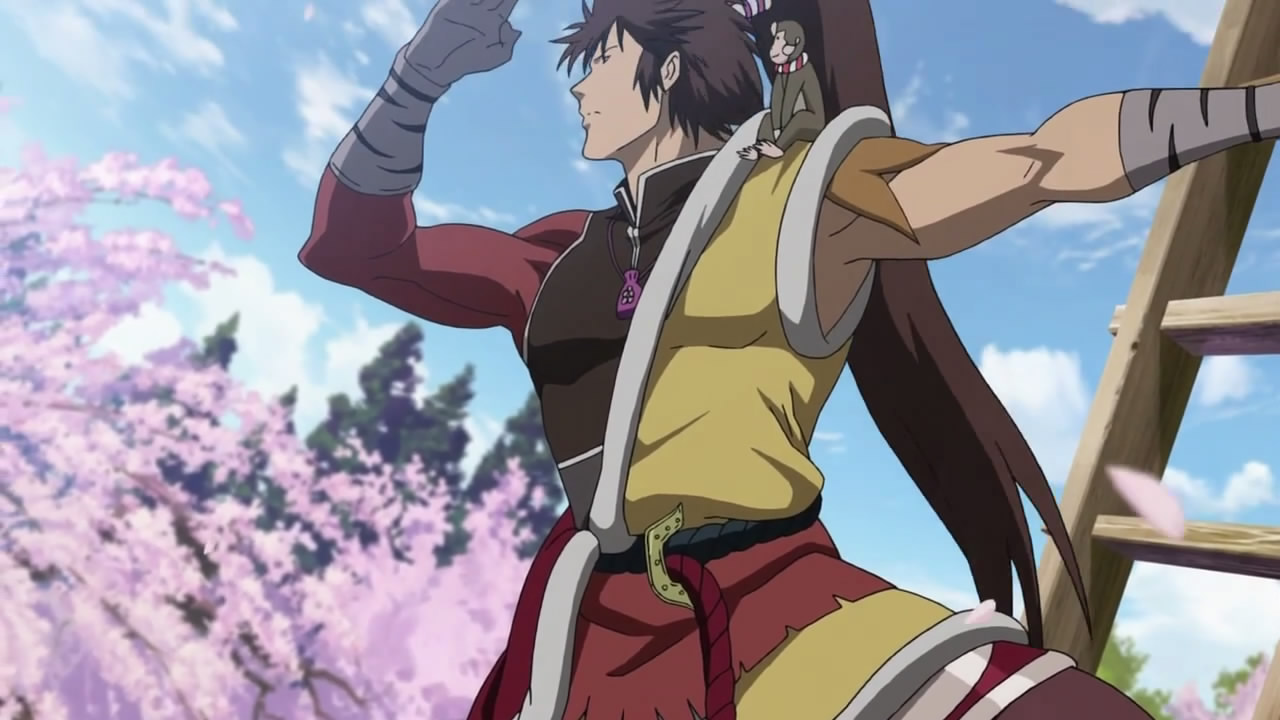
Photo credit: Google Images
For a time Keiji was accompanied by little Ofu. He meets the girl when he was challenged by the martial arts expert named Gankibo. Ofu had to follow him carrying a bucket on his head where he gathers the ears of dead enemies. The spirits of the fallen torment her and when Keiji defeats Gankibo he frees Ofu from her task, giving peace to the spirits as well. Ofu was actually 14 or 15 years old but looks like a little girl because she has decided not to grow.
The little shinobi Sutemaru is the first vassal to serve Keiji. At first, Sutemaru is part of Kaga's ninja clan serving Maeda Toshiie, and wants to kill Keiji and Matsukase (the horse who trampled and killed his brother). But soon Sutemaru decides to abandon the ninja clan to stay with Keiji, who he faithfully serves in hope of succeeding in killing him. Sutemaru fights with edged weapons, kunai and explosive weapons, as well as being often an explorer for Keiji. Peculiar of his character is the fact that he always hums when he fights and cannot lie because each time he does, his eyes become strabic.
The last important character is Lisa, a beautiful young woman with blond hair. Her father, Yoshiro, is the son of Sen no Rikyu and a Western woman, carried as a slave on a European pirate ship that will clash with Sakai merchants. Yoshiro will meet Keiji and show him a portrait of her daughter. The kabukimono will fall in love with the girl, who is desired by the Spanish pirate Carlos and the king of Ryukyu (now Okinawa, the main island of the Ryukyu archipelago) as well.
Instead, among the historical figures met by Keiji, there surely is his uncle Toshiie Maeda (also known as Mataza the lancer), the kanpaku (Emperor Regent) Hideyoshi Toyotomi, and Tokugawa Ieyasu his successor; but also Nobunaga Oda, former master of Hideyoshi and Ieyasu, and Hattori Hanzo, chief of Iga's ninjas at Ieyasu’s service. He will also meet the aforementioned master of ceremonies Sen no Rikyu, and the military commander of Yamashiro region (where the capital of the time was, Kyoto) Kanetsugu Naoe. Also, the Lord of Kanetsugu, Kagekatsu Uesugi, nephew and successor of the famous daimyo Uesugi Kenshin; Mitsunari Ishida, Hideyoshi’s favourite and Kanetsugu Naoe’s cousin, and Date Masamune, daimyo of northern lands of the country.
After Sekigahara’s Battle, where Mitsunari Ishida and Ieyasu Tokugawa are fighting for the control of the country, Keiji happens to find himself on the losing side. He was actually deployed and enlisted as Kanetsugu Naoe’s vassal to help the Uesugi clan. Ieyasu had provoked the Uesugis to seek war for the sole purpose of making Mitsunari move and expose himself. Keiji then decides to meet Ieyasu as an ambassador of the Uesugi clan. He shaves his long hair like a bonzo and gives up the compensation he is entitled to receive as a samurai of the clan. After peace was made, he decides to stay out of the scene until Kanetsugu asks him to go with him in his feud, request that Keiji accepts. The next morning, he gives up all his money and sets up an improvised party. The balloons tell us that he will move with Lisa in Nao's clan and cease to be a kabukimono.
He will die about 12 years later, under the reign of Tadakatsu Uesugi, heir of Kagekatsu.
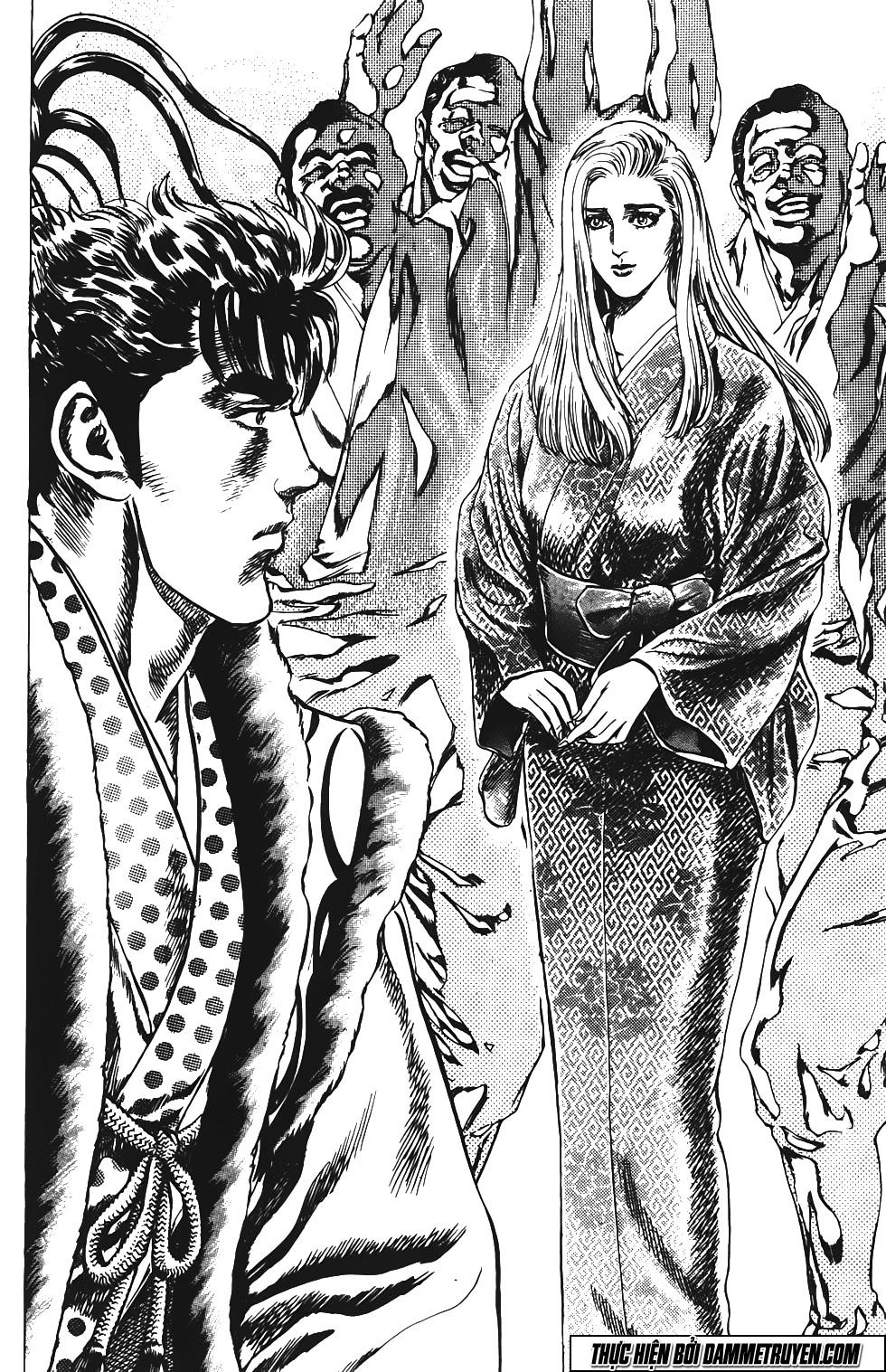
Photo Credit:truyentranhpro.com
Sengoku Basara
Sengoku Basara (戦 国 BASARA) is an anime divided into two series, based on the Devil Kings, a video game series released by Capcom, each consisting of thirteen episodes. A three-volume manga called Sengoku Basara Ranse Renbu is also based on the video game. The manga, created by Kairi Shimonotsuki and published by Udon Entertainment, is published in Italy by J-Pop. Instead, the two seasons of the anime were purchased by Yamato Video that announced it via Facebook and is part of the “Secret Project” of the Milanese publisher. The series is being broadcast on the new Yamato youtube channel from October 30, 2013.
On June 4, 2011, the feature film Sengoku Basara: The Last Party was released in Japan.
The following year, a live-action adaptation, Sengoku Basara: Moonlight Party was aired from 12 July to 20 September 2012.
Two years later, in 2014, the third television series, Sengoku Basara: Judge End, that inspired to the story of Sengoku Basara: Samurai Heroes of the video game, was aired.
Personally, I think that Keiji's character is very interesting, and above all, I think he needs to be more thoroughly comprehended. His personality differs from the others, and he is able to go against the seriousness characterizing the Samurai figure. I feel very close to him as an unstable and eccentric soul, always looking for something he can’t get but that is probably in his hands already. His way of breaking the schemes going as far as playing tricks on his relatives, the fact that he doesn’t care about etiquette and who he is. As well as his feeling a child in a body that is too big, especially for the time, and his being different, makes him a person that needs to be discovered and loved.
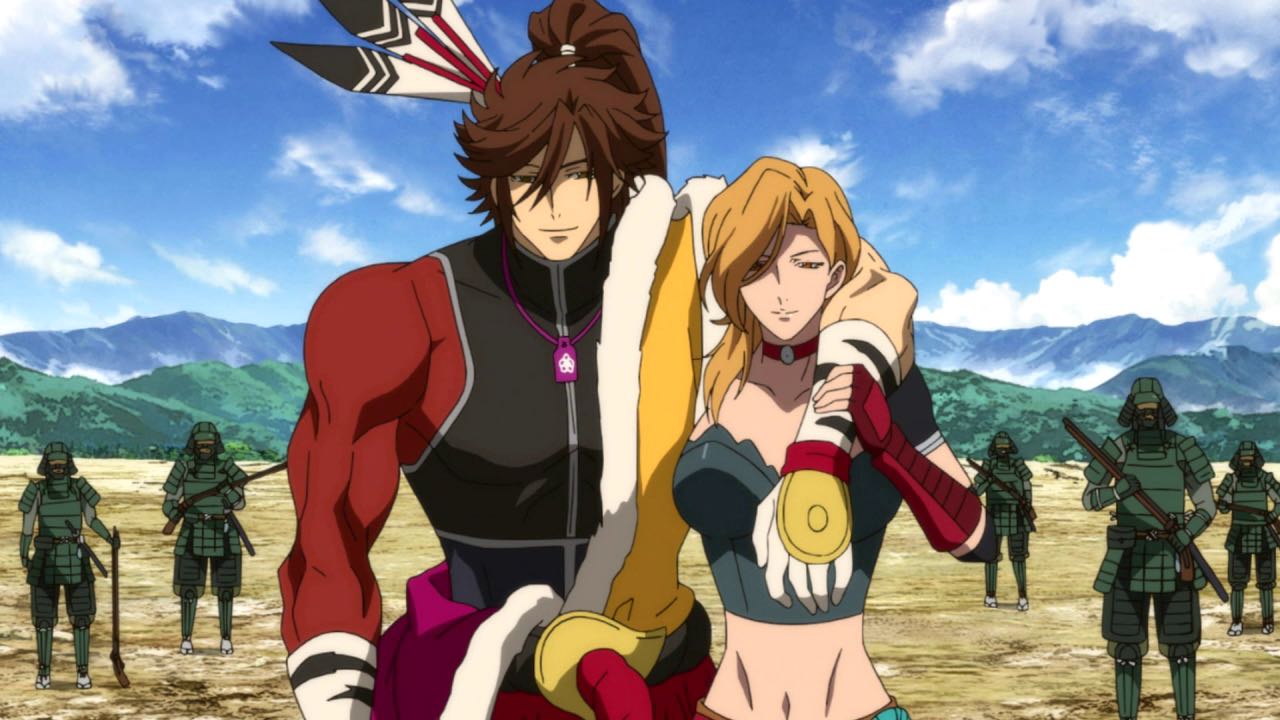
Photo credit: www.Tumbr.com
And there is also his love for Lisa that was one of the first times in which the East-West relationship was showed. A samurai who fell in love with a European woman was at that time a sort of scandal and something absolutely unusual. A beautiful story between the two, which continues to be a source of inspiration for other comics and video games.
“Everyone is weak and relies on others. As we reach out to each other, as we become friends or fight, the bond we form creates our tomorrow. “
Keiji Maeda - Sengoku Basara

Photo credit: Google Images
Japanese Traditions: Ōmisoka - New year's traditions
Japanese Traditions: Ōmisoka - New year
Shogatsu (or Oshogatsu) is the new year for the land of the Rising Sun.
In the Meiji period, this date was coinciding with the Chinese lunar calendar, but during the restoration of the same period, Japan changed to the Gregorian calendar too, fixing January 1st as the festive day we all know.
For the westerners it’s almost impossible to think to gather 365 days in just one moment. However, opening your eyes in front of the sight of the Hatsuhinode (the dawn of the first sun of the year) it is considered good luck and as the representation of the year that’s about to begin. However, every year, celebrations start on December 28th when all the preparations for new year begin. During the days of the Shougatsu Sanganichi, only the primary services are available, while Japanese people dedicate themselves to the Susuharai, cleaning of the whole house to get rid of all the negative traces of the past year. Kadomatsu (pine braches) and Shimenawa (straw rope with stripes of colored paper) are hanged on the doorsteps to keep the bad spirits away.
Japanese postal office are actively sending out and delivering cards for the best wishes that need to reach friends and families before new year’s day, the nengajou (年賀状).
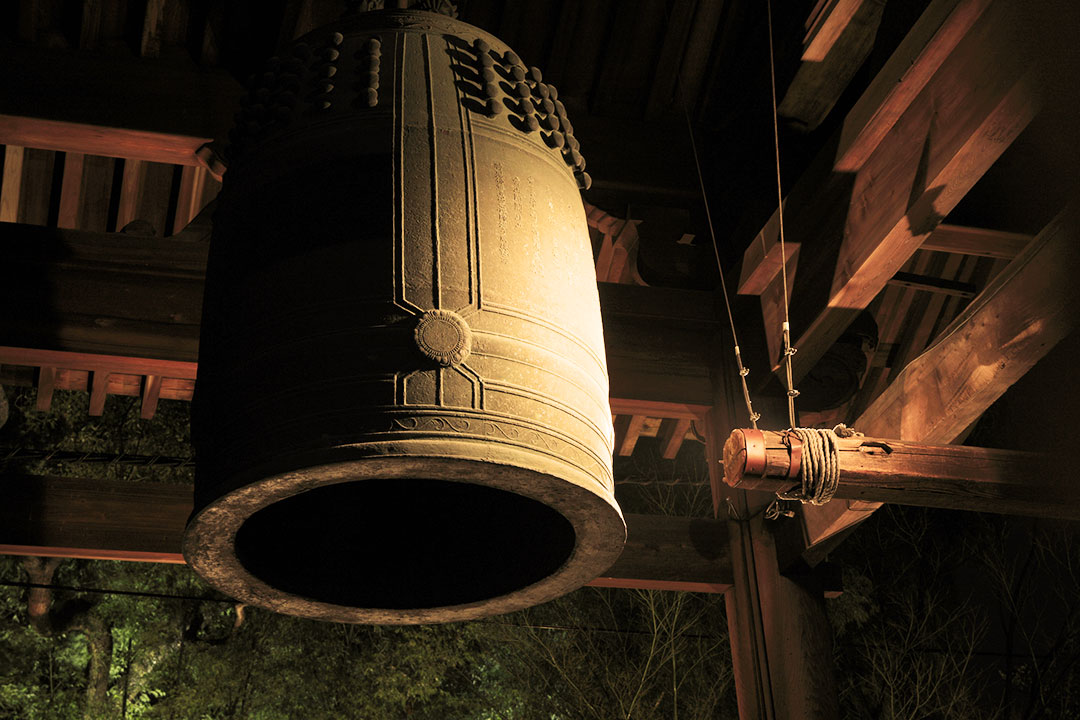
Everything is ready to spend the time with the family and on December 31st, that's when the Ōmisoka begins (literally New year’s eve, the last day of the year).
Around 10:30pm the Joya no Kane, the tolls from the Tsurigane (bell of the temple), begins. They are very slow, because the first toll has to stop ringing before a second one is taken. They go on until midnight for a total of 108 tolls. They are said to be purifying for all those who listen so that it’s possible to face a new chapter of our lives.
Traditional foods
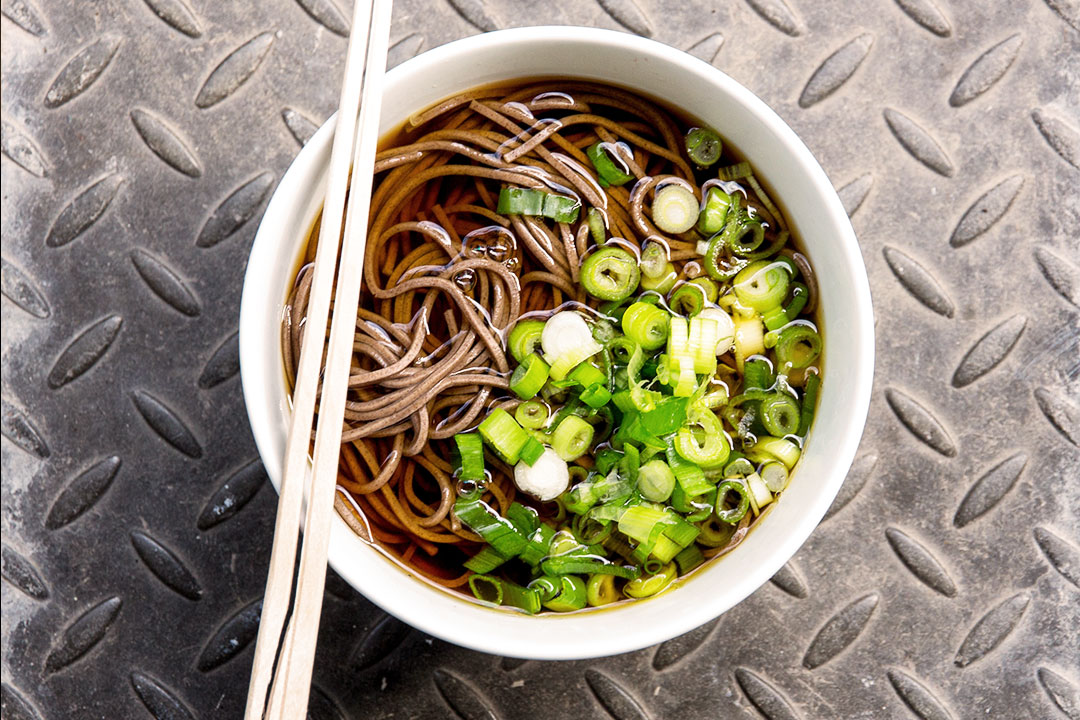
In this night it’s tradition to eat toshikoshi soba (年越しそば), noodles made with buckwheat, eggs and hot broth. The length of the noodles are auspice of a long life, their digestibility indicates the interior cleanliness and the ease in cutting them are a symbol of the removal of all bad things of the past.
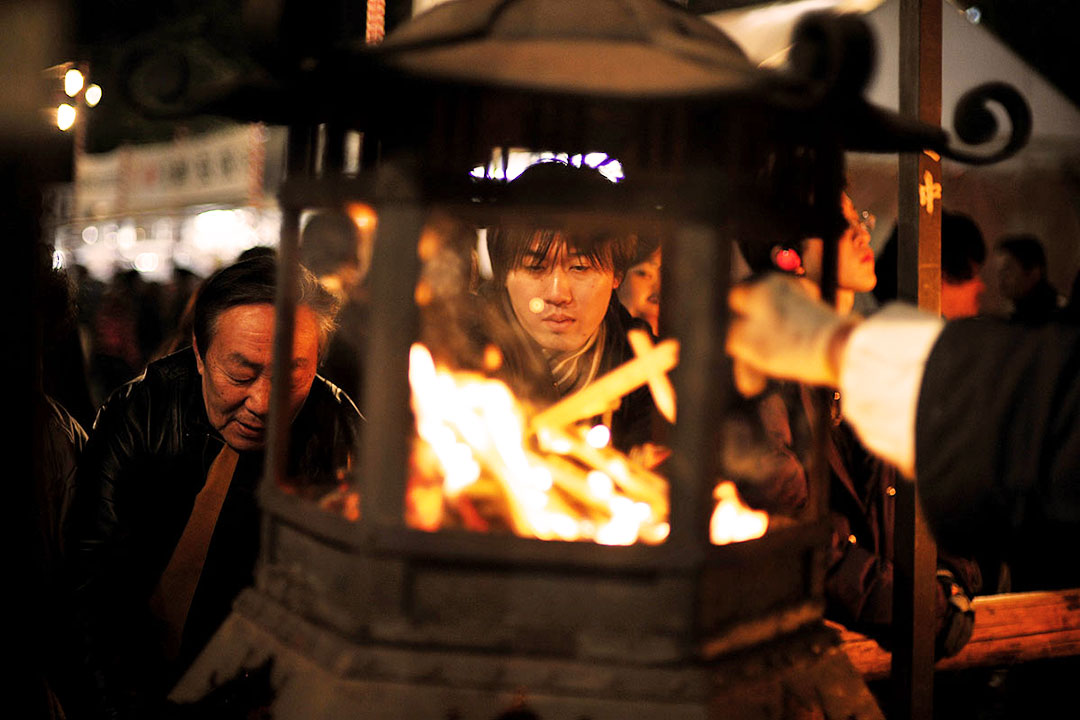
The day after, the first visit to the temple takes place, the HATSUMOUDE (初詣). To pray for health for every family member and their happiness is the right spirit to face a new beginning. Furthermore, Japanese kids usually receive a small engraved envelope, bukuro (袋), containing some money (otoshidama, お年玉).
Family and festivities are connected together also thanks to the food. On the tables you can find theosechi-ryouri (お節料理), specialties coming from the tradition like the kombu (昆布) weed. The kamaboko (蒲鉾, fish cake), kurikinton (栗きんとん, mash potatoes with chestunts), kinpiragobo (金平牛蒡, burdock boiled roots). The most loved and well known Kuro-mame (黒豆, sweet black soy beans) and of course sushi and sashimi. Due to all these specialties, on the 7th day of January there’s the jinjitsu (人日), the day for “stomach rest”, when you only eat the the nanakusa-gayu (七草粥, the soup of the seven herbs made with rice).
If you ever had the chance to be in Japan during the Ōmisoka, tell us in the comments or on our facebook page! We'd love to hear your thoughts and experiences.
Image source: Google








